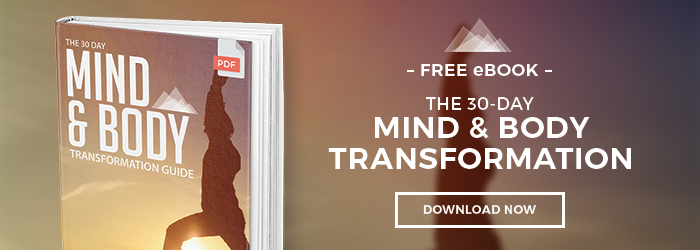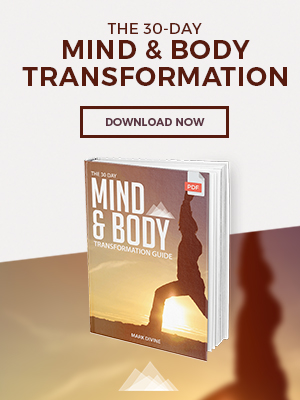One of the first lessons I give to Navy SEAL candidates is specific to the art of breath. I think controlled breathing is the most fundamental tool to develop before any other form of training, being that it works to strengthen and tame the body and mind.
Physically, learning to control your breathing allows you to preserve energy, expand your lungs, and weather extreme environments. Mentally, it helps reduce your stress, mitigate your anxiety, retain your heightened state of self awareness, and focus with a calmer state of being.
If you’ve ever partaken in any form of intense training, you know the relevance of controlled breathing. In my experience, that relevance is often isolated to high-intensity activities when it should be common practice for everyone—due vastly because of how it affects our mentalities.
One of the core principles of ‘reaching enlightenment’ in Buddhism stems from mastering your breath. Whether or not you believe in their teachings, it’s a fact that science can support the psychological benefits of controlled breathing.
Similar to my methodology with Navy SEAL candidates, one of the things I teach in my Unbeatable Mind program is how to master your breathing. I do this by explaining the art, then introducing my students to certain techniques. Once they begin to adapt these techniques into their daily life, they become a tool used to alleviate stress, sharpen the mind, and much more. In my program or not, athlete or a complete couch potato, I think everyone should know these three breathing exercises:
Box Breathing
I coined this technique due to its four-sided paradigm and I’ve been putting it into practice for years. Perhaps what I enjoy most about this exercise is that when I recommend it to people, they’re often shocked at how quickly they experience results. It’s versatile to the point that you can practice it just about anywhere: on a walk, in the office, before a physical activity, waiting in a reception room, anywhere. This is its form:
You first begin by exhaling until there is no air left in your lungs. Once they’re fully expelled, hold for 4 seconds. At the end of that hold, begin to inhale for a 4 second cycle. Your lungs should fill in this period. Once they’re full, hold your breath for 4 seconds. Try and pretend that your respiratory system is working involuntarily and that you’re not straining to block the air from releasing. Once the 4 seconds passes, exhale once more for another 4 seconds. Thus you’ve completed the four parts of Box Breathing.
Thus it should be a 4 count without air in the lungs, 4 count inhale through the nose, 4 count hold air in, 4 count release. As you improve, you can change the standard count to match your breathing threshold. I recommend you do this for 10-20 minutes a day.
Corkscrew Breathing
This type of breathing exercise isn’t one that you can practice everywhere, as there’s movement involved and you need to have an area to work with. The point of it is to open up the diaphragm and also twist the spine in a 180-degree angle.
First, pretend that you have a ball of energy on your side. By starting in a standing position, reach down to your side, over your knee (whichever side you choose) and pick up that ball of energy at the same time you’re inhaling through your nose.
Once that ball of energy is in your hands, by swiveling on the balls of your feet so not to torque your knees, extend and place that ball of energy on a ‘shelf’ behind the opposite side you bent towards (extending backwards and all the way over your shoulder). While you extend, be sure to exhale.
This one is a bit hard to explain without a visual demonstration. But imagine yourself standing and there’s a physical ball right behind you. By dropping to a single knee, you reach around and scoop the ball up then rise, twist your body like a corkscrew, and place the ball on a ‘shelf’ over the opposite shoulder.
This type of breathing exercise helps regulate circulation, expand the lungs, and evokes energy. Twice a day, five times each side is what I recommend to feel an effective improvement in energy.
Basic Breath Control
While this type of breathing exercise is incredibly simple in concept, I’ve found that it is also one of the most effective in practice. This technique focuses on an elongated exhalation that helps enforce the first sense of breathing discipline. Once this is mastered, it’s much easier to progress onto other techniques.
For this exercise, all you do is exhale double the amount that you inhale. The count doesn’t matter being that it’s dependent on the breather’s threshold. The only consistency should be the 1:2 ratios for inhaling to exhaling. This exercise helps you sleep, alleviate anxiety, and relaxes the body’s central nervous system.
I recommend you do this for ten minutes a day. Put ten minutes aside and dedicate them to this breathing exercise. The more comfortable you become, the more your threshold will increase, and in the future it can become a tool to help clear your mind in chaotic situations.






EXCELLENT! I tried the first & third exercises for the initial time and received benefits already.
Is there a link you can share to a video of the corkscrew breathing & movements? Thank you
[…] It’s hard to imagine more stressful work than being a Navy SEAL. To equip SEAL trainees with a way of quickly entering into a calm, energized and focused state, former Navy SEAL Mark Divine of SEALFIT teaches the box breathing method. […]
I have been avidly following the guidance in Mark Divine’s book titled “The Way of the Seals” and it has been a tremendous help in improving my mindset.
Lately, I have been trying to use the 1:2 breathing technique when running, I have found that it helps with sustained energy levels. But I am struggling with keeping only to the 1:2 for a longer run. Any suggestions would be helpful.
I look forward to further study of Mark’s work.
[…] Box breathing is a powerful technique Navy SEALs use to stay calm during life-threatening situations, popularized by former Navy SEAL Mark Divine. […]
I started consistently doing box breathing in the afternoons with the help of the app, and for me I figured out it causes bouts of weird feeling/anxiety – especially when I’m trying to fall asleep. I’ve tried going back to it, but when I do it, those evenings my nervous system acts up or something. Maybe I’m doing it wrong?